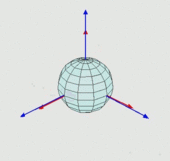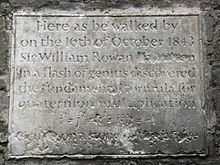What is Attitude?
A satellite is sent into space to perform a certain task. The payload is equipped to do this task. This could be anything from a spectrometer to analyse radiation or a transceiver to act as a repeater. This payload puts constraints on the orientation of the satellite. For example, a repeater would require the antennas to be aligned parallel to earth's surface. A spectrometer may need pointing the instrument towards a celestial body.
So the way this is achieved is to define an orbit frame and a body frame. The former gives 3D coordinate axes at every point on the orbit. The latter has similar 3D coordinate axes rigidly attached to the satellite body. The orientation of the body frame with respect to the orbit frame at every point is given by satellite’s attitude. And naturally we try to align these two frames.
Imagine you are flying a remote controlled plane and you are asked to maneuver it through a predefined aerial path. At every point on this path you know that the nose has to point forward in direction of propagation and tail upwards into the air. Now if the plane goes out of control or flips upside down you would try to adjust its orientation. The 'ideal' orientation of the plane is analogous to the orbit frame and the 'deviation' from this is indicated by the attitude.
There are two common tools used to specify attitude. First and quite common one being Euler angles. Basically, you start with an initial frame and tell by what angle and about which axes you need to do the rotation. Repeat this two more times each time using the ‘newly’ obtained axes post rotation. The final frame achieved is your required frame.This set of three angles are specified in the same order. Euler angles tells you how to get from one frame to another and hence the attitude.

In the above gif, we are trying to reach to a final orientation of the globe. However, the order of axis about which these rotations are done are predefined (here, z-x-z) and this in turn fixes the euler angles. But the problem with euler angles, as you may have noticed,is that these angles are not very intuitive. The axes of rotation and their order are decided beforehand. Now, how do we decide the angles constraining ourselves to that specific order? Not easy, is it?

The second method is to use quaternions. Any arbitrary rotation can be entirely done about a unique axis and using a particular rotation angle about it. So we have four parameters in a quaternion; three to give this axis as a vector (vector part) and one for the rotation angle(scalar part). These four are intertwined in the sense that the vector part doesn’t give you the axis alone.
There is an interesting story about Hamilton who had devised quaternions. So Hamilton was on his way to preside a meeting when the idea of quaternions dawned upon him. He had been struggling to extrapolate the idea of 2-D rotation which can be done using complex numbers to 3-D. And when he had his moment of epiphany, he got so excited that he couldn’t resist the urge to carve its formulae into the stone of Brougham Bridge as he paused on it.
To summarise, attitude of a satellite gives its orientation and finding it is the first step to controlling it.
If you are done reading this page, you can go back to Attitude Determination and Control Subsystem.